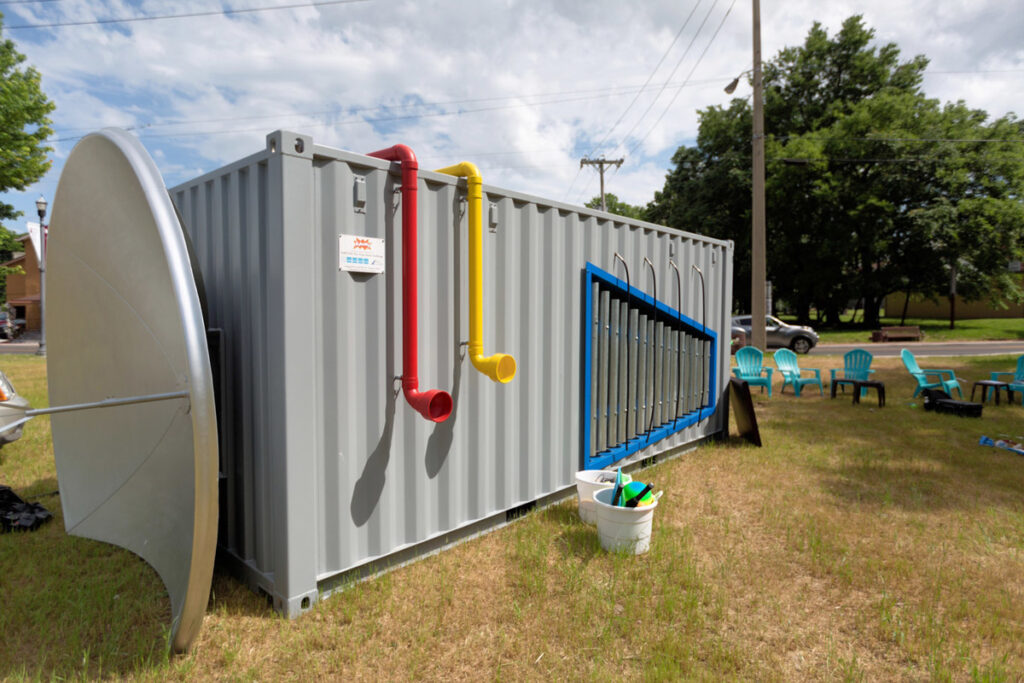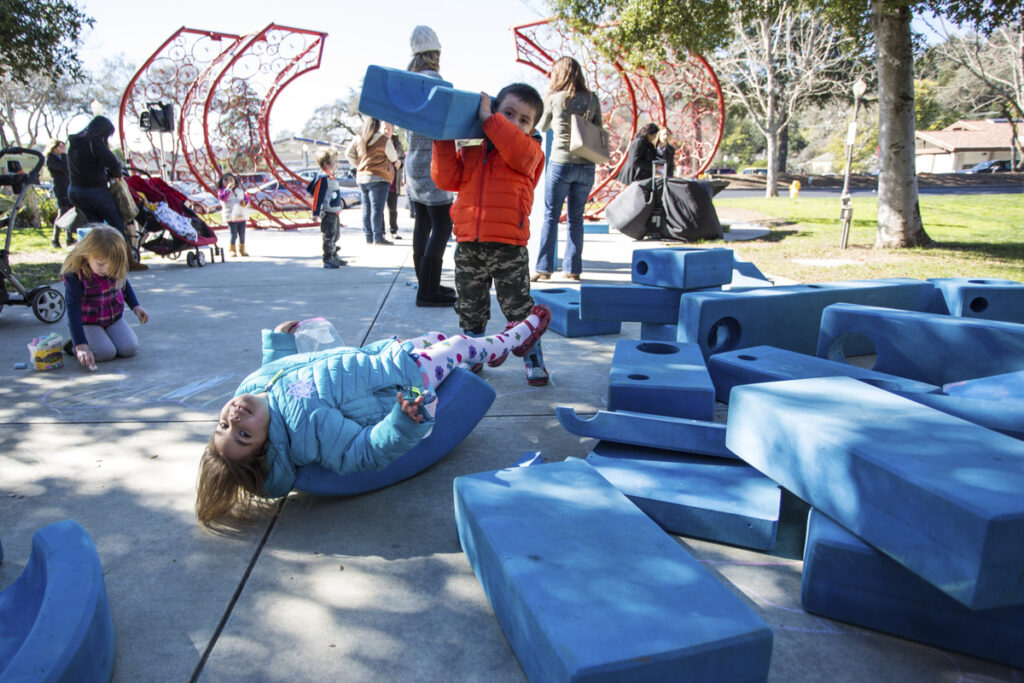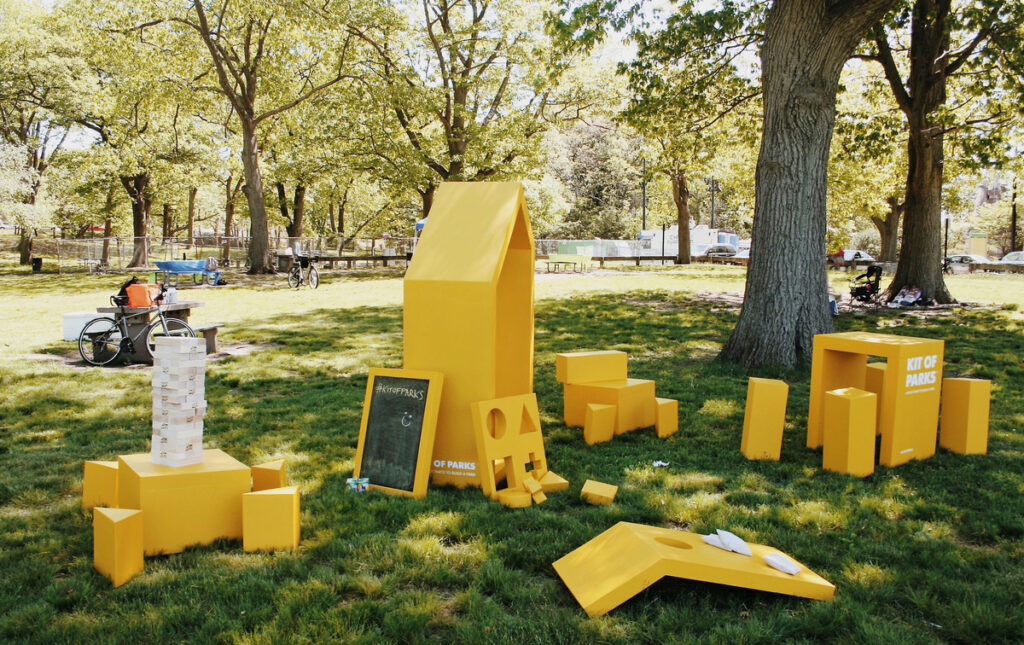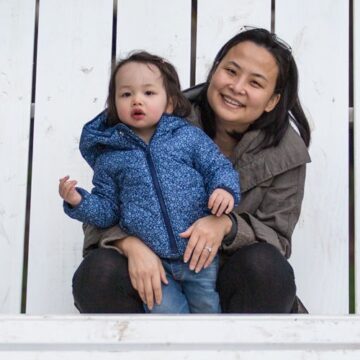Moveable and pop-up play installations can offer communities the ability to think outside-the-box when it comes to how and where play is provided. Both flexible and nimble, these playspaces can move about the city and aren’t tied to a specific location. Play can even be put in a box that is transported and deployed around the city. Because of this flexibility, moveable and pop-up play offers the ability to respond to unique opportunities, such as setting up a play installation at a festival or other special event. Moveable and pop-up play reduces the need to pick winners and losers when designing and locating a play installation, so that all kids have access to meaningful and active play.

Design Principles
Moveable and pop-up play installations can be anything from a one-day special event to a semi-permanent play installation in a particular location for a longer period of time. They can be ad hoc, ever-changing and constantly on-the-go, or regularly-scheduled events taking place at designated locations and times.
Rotating semi-permanent installations
Many cities have rotating public art programs, which use art installations to activate a location in the urban environment for a limited period of time. Play Everywhere installations can also go on rotation. Moveable and pop-up play ideas include:
- Locating a freestanding play installation on sidewalk or street corner.
- Bringing play to an existing park, particularly those without play facilities.
- Setting up a play “residency” at a popular destination, such as a shopping center or civic space.
- Housing a play installation in a repurposed shipping container, to be transported between events and locations as opportunities arise.

Pop-up parks
Pop-up parks involve the temporary—or permanent—transformation of underutilized spaces into community gathering places. With its origins in the tactical urbanism movement, the concept of a pop-up park has often been applied to the reclamation of auto-oriented places, such as streets, parking lots and spaces that are used by pedestrians. When it comes to Play Everywhere, ;pop-up parks can occur anywhere that space is available and inviting to kids. Ideas for pop-up parks include:
- Enlivening a sidewalk, streetscape or corridor with one or more play installations (see also Streets and Sidewalks.
- Closing off a street for a few hours, a few days or on a regular basis to create a “play street” with a variety of creative play experiences (see also temporary closure of streets in Streets and Sidewalks).
- Creating playful parklets by reclaiming one or more parking spaces as community gathering places and playspaces. Many cities now have formal parklet programs through which interested parties can apply to create their own parklets.
- Creating a “pop-up park-within-a-park,” by setting up a play installation within an existing park as a one-time event, or on a short-term or regularly-scheduled basis. This is a great opportunity to bring playful experiences to an underserved park that lacks play facilities or equipment, and can generate more activity and attract more people.
- Locating play installations at schools. During the week, a special pop-up play event can infuse the school day with surprise and wonderment; during weekends, the installation can bring schoolyards to life for the entire community’s benefit.
- Occupying indoor spaces, such as gyms, event halls, building lobbies or auditoriums, to create meaningful indoor play experiences, particularly during the winter months or inclement weather.

Kit of Parts
Moveable and pop-up play can also take the form of a “kit of parts”—essentially a “playspace in a box”—to inspire play whenever and wherever a situation demands, with little advance preparation required. When creating a kit of parts, cities can:
- Purchase a ready-made “pop-up kit,” such as Imagination Playground™ or a Uni reading room, or design your own kit of play equipment and games.
- Scale and replicate pop-up play, by creating larger sets of mobile play units that can be deployed by parks and recreation staff at city parks, business districts, property managers of private developments or school districts.
General considerations
- Fill the play gap by identifying the areas of a city that are most in need of play and targeting these areas for moveable and pop-up play.
- Create a Play Everywhere pilot project by testing a play installation in a variety of locations. Moveable and pop-up play can provide a useful opportunity to observe how kids engage with a play installation and, if needed, adapt it accordingly when it is permanently installed. Mobile play installations can also inform the selection of which permanent locations that will attract the most kids.
- Leverage the power of social media and real-time information technology. Play Everywhere can take a page from the playbook of food trucks and flash mobs by bringing play “to a street near you.” Just as food trucks announce their locations daily through social media, or flash mobs can assemble suddenly in a public space, mobile play can be deployed and marketed around the city on short notice by tapping into social networks through technology.
- Establish partnerships to implement and replicate mobile play at scale. City parks and recreation departments, property management companies (or other private entities that manage public spaces), school districts, business improvement districts, museums and private play destinations— all have the size and capacity to offer pop-up play experiences on a regular schedule, at multiple locations throughout a city, and often at a relatively low cost in the context of overall operating budgets.
